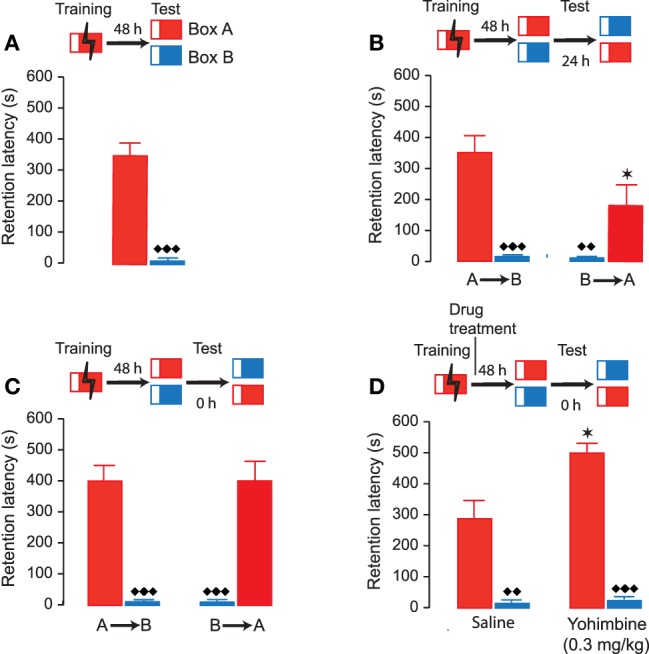Figure 2.

Accuracy of inhibitory avoidance memory. Inhibitory avoidance retention latencies (mean ± SEM) in seconds. The different test procedures are shown as schematic for each of the experiments. (A) Rats were given footshock in Box A (red) and 48 h later half of the rats were tested for retention in that same apparatus and the other half in a novel apparatus (Box B, blue). Retention latencies in Box A were significantly longer than retention latencies in Box B. ♦♦♦, P < 0.0001 vs. Box A. N = 8–9 rats/group. (B) Twenty-four hours later the same rats were tested in the other apparatus. Retention latencies in Box A were now significantly shorter than during the first retention test. A→B, rats were first tested in Box A and 24 h later in Box B; B→A, rats were first tested in Box B and 24 h later in Box A. ★, P < 0.05, vs. Box A during first retention test. ♦♦, P < 0.01; ♦♦♦, P < 0.0001 vs. Box A. (C) Rats were trained in Box A and 48 h later half of the rats were tested for retention in the same apparatus and the other half in a novel apparatus (Box B). They were immediately afterwards tested in the other apparatus. Retention latencies were now independent of the order of testing. A→B, rats were first tested in Box A and then in Box B; B→A, rats were first tested in Box B and then in Box A. ♦♦♦, P < 0.0001 vs. Box A. N = 9 rats/group. (D) Yohimbine (0.3 mg/kg, sc) administered immediately after inhibitory avoidance training enhanced 48-h retention latencies in Box A without affecting retention latencies in Box B. ★, P < 0.05 vs. the saline group. ♦♦, P < 0.01; ♦♦♦, P < 0.0001 vs. Box A. N = 8–9 rats/group.
